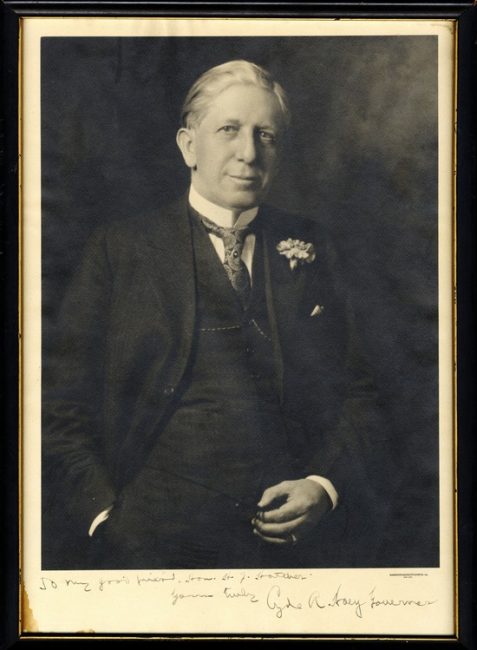The essay attached to Clyde Hoey‘s highway historical marker notes his “distinctive style of dress, replete with swallow-tail coat, striped pants, wing collar, high-topped shoes, and boutonniere,” and his official gubernatorial portrait doesn’t disappoint.
The inscription reads, “To my good friend, Hon. H. J. Hatcher. Yours truly, Clyde R. Hoey, Governor.”
John Blythe suggests that the friend was likely Howell John “Doggie” Hatcher of Morganton, decorated World War II veteran, legislator and commander of the State Highway Patrol.
As with many politicians, Hoey’s attitudes toward African-Americans and women have not aged well.


